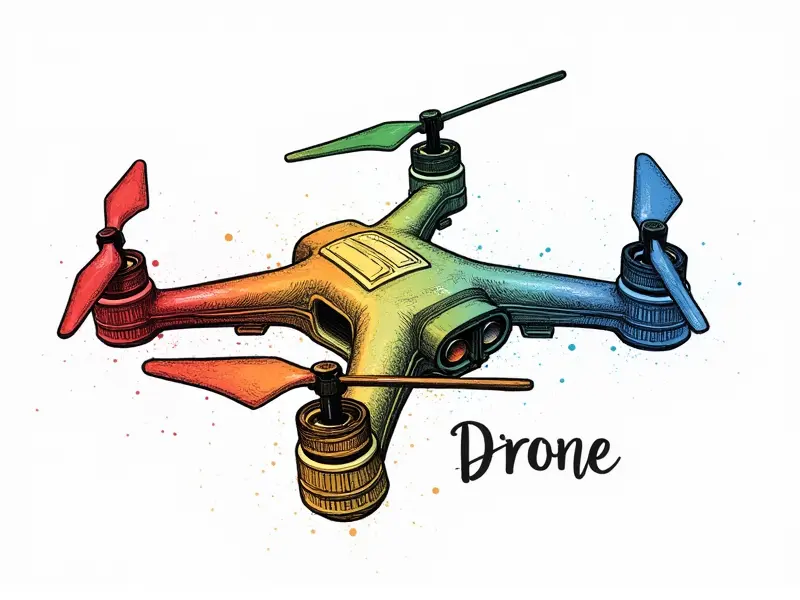How fast are FPV drones?

Top Speeds of FPV Racing Drones
The world of first-person view (FPV) drones is a thrilling arena where speed and agility reign supreme. These high-performance quadcopters are designed to reach incredible velocities, pushing the boundaries of what’s possible in drone technology. In this article, we delve into the top speeds achieved by FPV racing drones, exploring how fast these machines can really fly.
How Fast Can FPV Drones Really Fly?
The question on every enthusiast's mind is simple: just how fast can an FPV drone go? The answer varies depending on several factors such as the model, build quality, and pilot skill. However, it’s not uncommon for top-tier racing drones to reach speeds exceeding 100 miles per hour (mph). These figures are achieved through a combination of powerful motors, lightweight materials, and aerodynamic design.
Max Speed of FPV Racing Quads
The maximum speed of an FPV racing quad is contingent upon its specifications. High-performance models like the TBS Discovery XE and Dingo have been clocked at over 105 mph. These drones are engineered with precision components that allow them to achieve such impressive velocities, making them a favorite among competitive pilots.
Key Components for Maximum Speed
- Motors: High-torque motors capable of delivering maximum thrust.
- Batteries: Lightweight yet high-capacity batteries provide the necessary power output.
- Airframes: Carbon fiber and other lightweight materials reduce drag and increase efficiency.
FPV Drone Speed Demos Unveiled
To truly understand how fast FPV drones can fly, it’s essential to witness them in action. Numerous online platforms feature speed demos showcasing the capabilities of these machines. Pilots often share videos demonstrating their quadcopters reaching top speeds, highlighting the precision and control required to achieve such velocities.
The Fastest FPV Drones in 2025
In 2025, several models stand out as the fastest FPV drones available. The TBS Discovery XE, for instance, continues to be a benchmark with its top speeds exceeding 105 mph. Additionally, the Holybro Skymaster and Dingo offer competitive performance, reaching similar velocity ranges.
Top Models in 2025
- TBS Discovery XE: Known for exceptional speed and stability.
- Holybro Skymaster: High-performance with advanced aerodynamics.
- Dingo: Lightweight design optimized for maximum velocity.
FPV Drone Speed Records Shattered
The pursuit of speed in FPV racing drones has led to numerous records being broken. Pilots continually push the limits, refining their skills and optimizing their equipment to achieve ever-greater velocities. Recent advancements have seen top speeds surpassing 105 mph, setting new benchmarks for future generations.
Achieving Maximum Speed on FPV Drones
Maximizing speed in FPV drones requires a combination of technical expertise and pilot skill. Fine-tuning the setup is crucial, from selecting the right motors to optimizing propellers and frame designs. Additionally, pilots must master flight techniques that maximize efficiency and control at high speeds.
Tips for Maximizing Speed
- Motor Selection: Opt for high-torque motors with efficient power delivery.
- Battery Optimization: Use lightweight, high-capacity batteries to enhance performance.
- Pilot Technique: Practice precision maneuvers and maintain optimal flight angles.
Breaking the Sound Barrier with FPVs
The concept of breaking the sound barrier may seem far-fetched for FPV drones, but advancements in technology are making it a possibility. While current models have not yet achieved supersonic speeds, ongoing research and development could bring us closer to this milestone.
Technological Challenges
- Aerodynamic Design: Developing frames that can handle extreme velocities.
- Motor Efficiency: Creating motors capable of sustained high-speed performance.
- Pilot Training: Preparing pilots for the unique challenges of supersonic flight.
FPV Drone Racing: Speed and Agility Matters
In FPV drone racing, speed is just one aspect of success. Aggressive maneuvers and precise control are equally important. Racers must balance top speeds with agility to navigate complex courses efficiently. This combination of factors determines the winner in competitive events.
Key Skills for Success
- Precision Flying: Mastering tight turns and quick maneuvers.
- Racing Strategy: Developing tactics to outmaneuver opponents on the course.
- Tech Savvy: Staying up-to-date with the latest drone technology.
How Fast Do Pro FPV Racers Go?
Professional FPV racers are at the forefront of pushing speed limits. These skilled pilots often reach top speeds exceeding 105 mph, showcasing their expertise in handling high-performance drones. Their performances not only entertain but also inspire advancements in drone technology.
Pilot Profiles
- Chris Van Zant: Renowned for his aggressive flying style and record-breaking speeds.
- Matt Bennett: Known for innovative racing strategies and technical expertise.
- Liam Nicholson: A pioneer in FPV drone technology and competitive racing.
Exploring Max Speeds in FPV Drone Racing
The exploration of maximum speeds in FPV drone racing is an ongoing journey. As technology evolves, so do the capabilities of these machines. Pilots continue to refine their skills and equipment, pushing boundaries further with each race.
Futuristic Possibilities
- Advanced Materials: Utilizing cutting-edge materials for lighter, more efficient frames.
- Innovative Motors: Developing motors that deliver unprecedented power and efficiency.
- Data Analytics: Leveraging data to optimize performance and predict future advancements.
Conclusion
The world of FPV drone racing is a realm where speed reigns supreme. From the top speeds achieved by high-performance models to the skills displayed by professional pilots, every aspect of this sport pushes the boundaries of what’s possible. As technology continues to advance, we can expect even greater velocities and more thrilling performances in the future.

